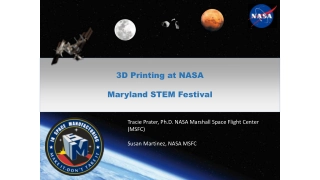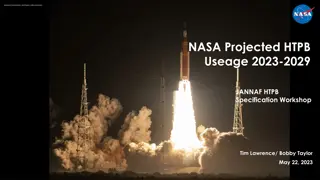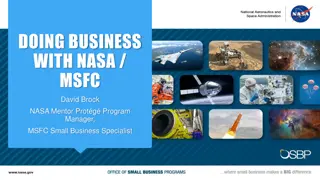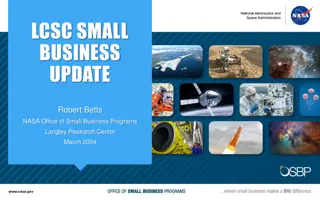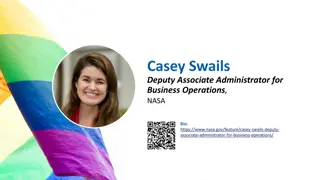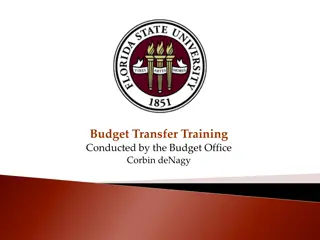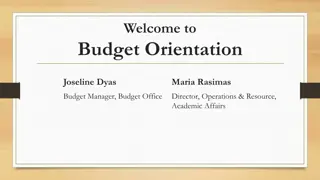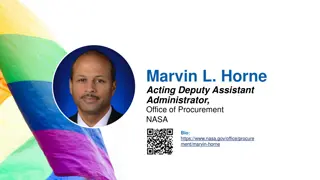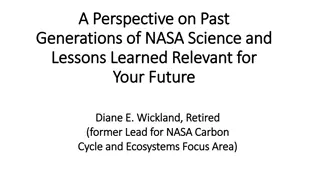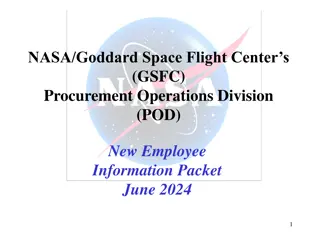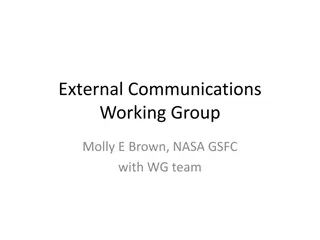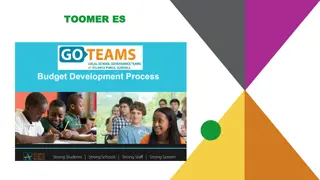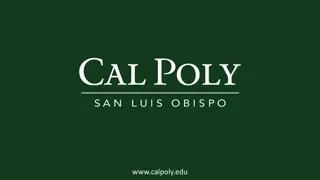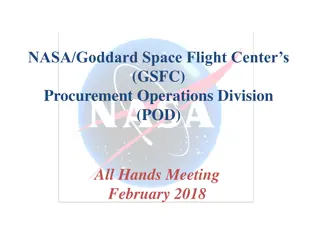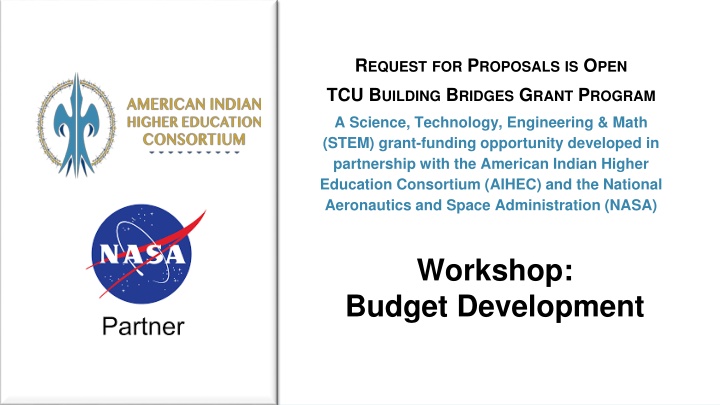
Opportunity for Tribal Colleges & Universities: STEM Grant Program by AIHEC & NASA
"Explore the Building Bridges Grant Program offering STEM grant funding for Tribal Colleges & Universities in partnership with AIHEC and NASA. Learn about eligibility, funding amounts, project goals, and key dates to submit proposals."
Download Presentation

Please find below an Image/Link to download the presentation.
The content on the website is provided AS IS for your information and personal use only. It may not be sold, licensed, or shared on other websites without obtaining consent from the author. If you encounter any issues during the download, it is possible that the publisher has removed the file from their server.
You are allowed to download the files provided on this website for personal or commercial use, subject to the condition that they are used lawfully. All files are the property of their respective owners.
The content on the website is provided AS IS for your information and personal use only. It may not be sold, licensed, or shared on other websites without obtaining consent from the author.
E N D
Presentation Transcript
REQUEST FOR PROPOSALS IS OPEN TCU BUILDING BRIDGES GRANT PROGRAM A Science, Technology, Engineering & Math (STEM) grant-funding opportunity developed in partnership with the American Indian Higher Education Consortium (AIHEC) and the National Aeronautics and Space Administration (NASA) \ Workshop: Budget Development
Todays Agenda o Welcome o Budget Development o Budget Guidelines and Funding Restrictions o Scoring Rubric o Review o Discussion and Questions o Closing & Next Steps
Timeline & Overview Each cycle, 4 webinars will be offered to support the proposal development process. Information Session + Q & A (September 26) Workshop: Community of Practice (October 4) Workshop: Building A Competitive Proposal (October 11) Workshop: Budget Development (October 18) \ Office Hours: Monday, TBD *Webinars will also be recorded and uploaded to AIHEC.org for review TCU faculty and staff who are interested but are not ready to submit a project are encouraged to attend workshops and learn more about the program, then submit an application for a future cycle.
RFP Overview - FAQ RFP RELEASE DATE: September 16, 2024 PROPOSAL DUE DATE: 11:59 PM Eastern Time (ET) November 12, 2024 FUNDING AMOUNT: Multiple awards of up to $68,600 are available ELIGIBILITY: Funds are available to faculty led teams from all accredited Tribal Colleges & Universities ESTIMATED CONTRACT PERIOD: January 16, 2025, through January 15, 2027, or up to 2 years (24 months) from date of award, depending on the scope of the project. Projects designed for shorter periods of time will receive equal consideration. If projects last 1 year or less, projects can be renewed for a second cycle with an additional award.
Timeline & Overview \
Project Goals Review Project must meet at least two of the three programmatic goals 1. Increase the number of Tribal College students engaging in STEM research and education activities. (Examples: internships, externships, Experiential Learning Opportunities (ELOs), Research Experiences for Undergraduates (REUs)) 2. Increase the enrollment of Tribal College students in STEM degree programs and pursuing STEM career pathways. 3. Strengthen the capacity of the Tribal College to deliver STEM courses, degrees and curriculum. AND \ Demonstrate alignment to at least one of the three strategic goals 1. Strategic Goal 1.0: Create unique opportunities for a diverse set of students to contribute to NASA s work in exploration and discovery. 2. Strategic Goal 2.0: Build a diverse future STEM workforce by engaging students in authentic learning experiences with NASA s people, content and facilities. 3. Strategic Goal 3.0: Attract diverse groups of students to STEM through learning opportunities that spark interest and provide connections to NASA s mission and work.
Budget Budget Guidelines and Funding Restrictions Funding for the Principal Investigator s (PI) salary must not exceed 15% of the proposer s total budget. A maximum of 20 percent of the total budget may be used for infrastructure (equipment and laboratory facilities). A maximum of 15 percent of the total budget may be used for acquiring direct NASA services related to the conduct of research (i.e., cost for use of NASA unique facilities, etc.). \ A maximum of five (5) percent of the total budget may be distributed to NASA Centers that are partnering with institutions. These funds may not be used for NASA civil servant salaries or travel. The lead TCU shall retain and utilize 100 percent of the total budget. No subawards will be allowable under these grants.
Budget Table Budget Table NASA Bridges funds may be used for the support of: TCU students (stipends), faculty, and staff (salary & fringe) Subject matter expert consultants Research-related equipment, travel, and materials Professional development program registrations and associated travel costs \ Overhead/general and administrative (G&A) rate (include negotiated rate agreement) NASA and AIHEC will provide a sample budget template. Points will not be lost for using an in-house template but must be clear and concise. Include a brief description if necessary, and the anticipated total cost of the item or service. For staff and personnel time, include both the total amount as well as a per diem or hourly rate.
Provide a breakdown of the funds requested. Itemize big-ticket items, or major categories of materials or supplies to be acquired to justify how the funds requested will support the Budget Template facilitation of your project. Group smaller items, example: craft supplies, tuning forks, etc. - Expand or change the table as needed. \
Direct vs Indirect Costs Budget Table Direct costs Direct costs are costs that are directly related to the project. Salaries, fringe benefits, materials and supplies, services, and travel are examples of direct costs. Indirect costs Indirect costs are costs that are not directly related to a specific cost, sometimes referred to as overhead (the cost of doing business) . Some examples of indirect costs include administration costs, utilities, building costs, etc. \ Two Kinds of Indirect Cost Rates Modified Total Direct Cost (MTDC) rate (negotiated rate) Salary and fringe benefits, materials and supplies, services, travel De Minimis indirect cost rate 10% of MTDC
Indirect cost rates shall be calculated based on the proposing institution s guidelines. NASA Indirect Cost Guidelines Indirect costs including the lead institution s general and administrative (G&A) expenses are permitted under this NOFO . Any indirect costs must comply with the Indirect Costs section of the *NASA Grant and Cooperative Agreement Manual (GCAM), currently section 5.14.2 and be consistent with the definition of modified total direct costs in **2 CFR 200.1, Definitions. \ The budget must clearly include information for the lead institution s overhead/ G&A expenses. *Link to Document **Modified Total Direct Cost (MTDC) means all direct salaries and wages, applicable fringe benefits, materials and supplies, services, travel, and up to the first $25,000 of each subaward (regardless of the period of performance of the subawards under the award).
Budget Narrative Budget Narrative Write a budget narrative that clearly describes anticipated expenditures and how they are necessary for the project. For each budget category, provide \ appropriate details taking care to be as specific as possible. Be sure to address any vague items such as supplies .
CHECKLIST BUDGET REQUIREMENTS AND RESTRICTIONS Checklist Funding for the Principal Investigator s (PI) salary must not exceed 15% of the proposer s total budget. PI: $3,000 (Budget: $67,260) A maximum of 20 percent of the total budget may be used for infrastructure (equipment/laboratory facilities). N/A A maximum of 15 percent of the total budget may be used for acquiring direct NASA services related to the conduct of research (i.e., cost for use of NASA unique facilities, etc.). SME $10K \ A maximum of five (5) percent of the total budget may be distributed to NASA Centers that are partnering with institutions. These funds may not be used for NASA civil servant salaries or travel. N/A Address any vague items such as supplies. Included specific use/reason The lead TCU shall retain and utilize of 100 percent of the total budget. No subawards will be allowable under these grants. No Subawards
REVIEW 17
When writing your Proposal Tips for Writing your Proposal 1. Start Early Finish Early don t wait until the last minute to start or finish, allow as much time as you can for developing/editing. 2. Time Crunch - If you re struggling and/or find you re running out of time reach out to us we re here to help! 3. Thinking about post-award at the pre award stage Check in with faculty to insure they ll have the bandwidth to execute the project as it s \ designed in your proposal; Dean and Provost to ensure faculty release. 4. Pre-Application - Consider submitting a pre-application - this will help you flush out your idea(s) and give us the opportunity to provide feedback. 5. Keep in mind this project doesn t have to be a brand-new idea rather, it can be designed to support an existing, ongoing (RFP qualified) faculty project.
Review Priority Areas of Support Research experiences for undergraduates (REUs) STEM program instrumentation/equipment acquisitions Course and curriculum enhancements (new courses, delivery support technologies) Professional development for TCU faculty, undergraduate, and graduate students, including conferences and workshops In person, hybrid or virtual NASA Internships for TCU students which must be funded at the same level of set NASA Intern cost amounts, as shown in the tables \
TCU Building Bridges Scoring Rubric \
Next Office Hours Workshop We re here to Help! Tuesday, November 5th \ 3:00 4:00pm ET
THANK YOU FOR COMING! PLEASE COMPLETE OUR SURVEY: \ WE WILL COME BACK TOGETHER TBD OFFICE HOURS

